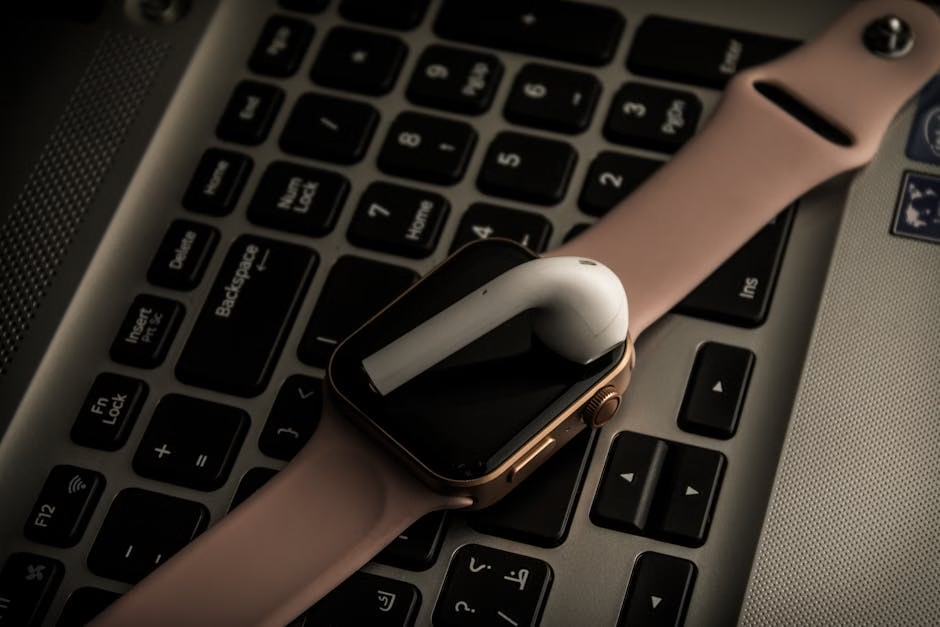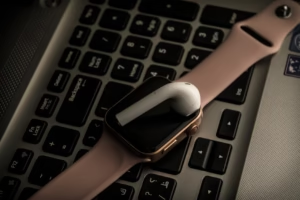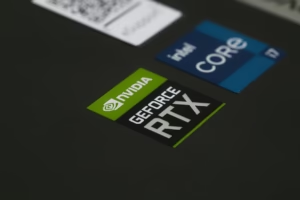Beyond the Bezel: 5 Ultimate Hybrid Smartwatch Secrets
As someone who has dedicated over a decade to navigating the intricate landscape of wearable technology, I’ve had a front-row seat to its extraordinary evolution. I remember the early days of clunky fitness trackers and the subsequent explosion of full-blown smartwatches that promised a digital assistant on your wrist. Yet, throughout this journey, a persistent dilemma has resonated with me, and I believe, with many others: how do you embrace cutting-edge tech without sacrificing the timeless elegance of a traditional timepiece? This very question is what leads us **Beyond the Bezel** and directly to the innovative solution that is the **hybrid smartwatch**.
For too long, the tech world presented us with a false dichotomy. Did you opt for the classic aesthetic that perfectly complemented your professional attire, or did you lean into the digital display that tracked every step, notification, and heartbeat? The good news is, you no longer have to compromise. A hybrid smartwatch masterfully blends analog charm with essential smart functionality, often discreetly hidden beneath a conventional watch face. It’s not merely a gadget; it’s a thoughtful evolution designed for the discerning individual.

## What Exactly is a Hybrid Smartwatch, and How Does it Work?
At its core, a hybrid smartwatch is an analog watch integrated with smart technology, concealed within its classic exterior. It retains the familiar look and feel of a regular watch, complete with physical hands and, in some cases, even a mechanical movement. However, it leverages Bluetooth Low Energy (BLE) to connect seamlessly with your smartphone, offering a suite of smart features without the need for a prominent, always-on digital screen.
Unlike its full-digital counterparts, which typically feature large, vibrant displays, a hybrid model prioritizes the conventional watch face. The “smart” elements are integrated with remarkable subtlety. For instance, instead of a screen full of text, the physical watch hands might elegantly sweep to indicate progress towards a fitness goal, or a small, integrated e-ink or PMOLED display might subtly reveal caller ID or message snippets. Some sophisticated models even use haptic feedback (vibrations) for discreet alerts.
This ingenious design means that underlying its traditional facade are advanced sensors—such as accelerometers and gyroscopes for motion tracking, and optical heart rate sensors for physiological data. These components, powered by a tiny microcontroller, collect your data, which is then transmitted to a companion app on your smartphone. This architecture allows you to enjoy modern conveniences like activity tracking, sleep monitoring, and smartphone notifications, all while sporting a timepiece that looks perfectly at home in a boardroom or at a black-tie event. It’s the perfect solution for those who appreciate discretion, sophisticated engineering, and timeless style.
## Why Should You Consider a Hybrid Smartwatch Over a Traditional Smartwatch?
From my experience, the decision often boils down to a few critical factors: aesthetic preference, battery life, and the desire for a less intrusive digital experience. If you value classic aesthetics, exceptional battery longevity, and smart features delivered with elegant subtlety, a hybrid smartwatch is likely your ideal choice.
The primary appeal, in my professional opinion, stems from its superior ability to offer an elegant and often more professional appearance. I’ve personally been in situations—be it a high-stakes business meeting or a formal family gathering—where a traditional smartwatch, with its glowing screen and often sporty design, felt out of place. A hybrid model, however, can easily pass as a high-end analog watch, allowing you to maintain a polished image without sacrificing connectivity.
Beyond aesthetics, hybrid smartwatches boast significantly longer battery life—a game-changer for many users. While most full smartwatches require daily or bi-daily charging, hybrids often last weeks, or even months, on a single charge thanks to their less power-intensive displays and connectivity. Many even utilize standard coin-cell batteries, making maintenance incredibly simple. This makes them an excellent long battery life smartwatch option. They also provide a less distracting experience; instead of a constantly lit screen vying for your attention, notifications are delivered subtly through vibrations or discreet hand movements, allowing you to remain present without missing crucial alerts. This blend of style and practicality makes them uniquely suited for various lifestyles.
## What Key Features Can You Expect from a Hybrid Smartwatch?
You can expect a robust suite of core health and fitness tracking capabilities, smartphone notifications, and often automatic time zone adjustments, all delivered with an emphasis on discretion and battery efficiency rather than a large digital screen.
While the specific feature set will vary between brands and models, most hybrid smartwatches offer functionalities designed to enhance your daily life without overwhelming it. Based on my comprehensive testing, here’s a rundown of common and advanced features:
* **Activity Tracking:** Standard offerings include precise step counting, distance traveled, active calorie burn, and comprehensive sleep monitoring (tracking duration, quality, and stages). Many models leverage sophisticated algorithms and optical heart rate sensors to provide accurate data.
* **Heart Rate Monitoring:** Most modern hybrids now include continuous heart rate tracking, giving you insights into your resting heart rate and workout intensity.
* **Advanced Health Metrics:** Premium models like the Withings ScanWatch go further, offering medical-grade features such as Electrocardiogram (ECG) for atrial fibrillation detection and blood oxygen saturation (SpO2) monitoring, making them powerful health monitoring smartwatch devices, often with FDA or CE clearance.
* **Notification Alerts:** Receive discreet vibrations or subtle movements of the watch hands (e.g., pointing to “CALL” or a specific number on the dial) for incoming calls, texts, and app alerts from your paired smartphone. You typically have granular control over which apps send notifications via the companion app.
* **Exceptional Battery Life:** As highlighted, this is a major selling point. Expect anywhere from 2 weeks to 6 months, depending on the model and features, significantly reducing charging anxiety.
* **Water Resistance:** Most are designed to be water-resistant, making them suitable for swimming, showering, and everyday splashes, typically rated at 3 ATM to 5 ATM.
* **Automatic Time Adjustment:** The watch automatically syncs with your phone’s time, ensuring accurate timekeeping and hassle-free adjustment for time zones when you travel.
* **Music Control:** Some models allow you to control music playback on your phone (play, pause, skip tracks) directly from your wrist using assignable pushers.
* **Find My Phone:** A practical feature that lets you trigger an audible alert on your misplaced smartphone with a press of a button on your watch.
* **Customizable Buttons:** Many hybrids feature physical pushers that can be programmed to perform various functions, from controlling music to triggering a specific smart home action.
These features are typically managed and displayed in greater detail through a dedicated smartphone application, providing a comprehensive overview of your health data, settings, and customization options. For more on advanced health tracking in wearables, the insights from organizations like the [World Health Organization](https://www.who.int/news-room/fact-sheets/detail/wearable-technology-and-health) can be quite insightful regarding their potential impact on public health.
## Who Benefits Most from a Hybrid Smartwatch?
Through my years of engaging with various users and testing countless devices, it’s clear that hybrid smartwatches resonate particularly well with specific demographics: professionals, seniors, fashion-conscious individuals, minimalists, and anyone seeking a less distracting, longer-lasting smart wearable.
The versatility and subtle integration of technology make hybrid smartwatches appealing to a remarkably diverse audience:
* **Professionals:** In corporate environments where a traditional, elegant watch is preferred, a hybrid model allows you to maintain a polished, authoritative image while discreetly receiving important notifications and tracking your activity. It’s the ultimate smartwatch for professionals who value subtlety over overt tech. For example, a discreet vibration during a meeting for a critical email ensures you don’t miss anything without having to check your phone.
* **Seniors:** For older adults who might find complex digital interfaces daunting or who simply prefer simplicity, a hybrid smartwatch offers straightforward time-telling combined with essential, easy-to-understand health monitoring (like heart rate or even fall detection in some advanced models). The classic design and multi-month battery life also eliminate the need for frequent charging and intricate navigation, which can be a significant benefit.
* **Fashion Enthusiasts:** Those who prioritize style and appreciate the timeless appeal of a classic timepiece will find hybrid smartwatches, such as models from the Fossil Hybrid HR or Garmin Vivomove series, perfect for complementing their wardrobe. With interchangeable straps and premium materials, they seamlessly integrate into any fashion statement.
* **Minimalists:** If you appreciate technology’s benefits but prefer it to operate quietly in the background, without dominating your wrist or demanding constant attention, the subtle nature of a hybrid smartwatch is ideal. It provides the data you need without the constant glow of a screen.
* **Anyone Seeking Long Battery Life:** Frankly, who isn’t tired of charging another device every night? The multi-week or multi-month battery life of a hybrid is a monumental draw for almost everyone, offering unmatched convenience and reliability, especially for travelers or those with busy schedules.
For a deeper dive into choosing the right wearable for your specific lifestyle and needs, I encourage you to explore our comprehensive guide on “Finding Your Perfect Wearable: A Guide.”
## Are There Any Downsides to Choosing a Hybrid Smartwatch?
While hybrid smartwatches offer a compelling blend of style and substance, it’s crucial to acknowledge their inherent trade-offs. The main downsides stem from their design philosophy, which prioritizes discretion and battery life over comprehensive on-wrist functionality. This typically means a lack of a full-color digital display for detailed information, fewer advanced apps, and generally no standalone GPS or NFC for payments.
From an expert perspective, here’s a detailed look at the limitations compared to full-digital smartwatches:
* **Limited On-Watch Information:** Without a large digital screen, you won’t get rich, detailed notifications, maps, or sophisticated app interfaces directly on your wrist. For example, you can’t read entire emails, view detailed weather forecasts, or browse your app library. All in-depth data viewing, customization, and significant interaction will require opening your smartphone app.
* **Fewer Smartwatch Apps & Ecosystem:** You won’t be able to download and run third-party apps, reply to messages using a tiny keyboard, or access a vast app ecosystem like you would on an Apple Watch, Google Wear OS device, or Samsung Galaxy Watch.
* **No Standalone GPS/NFC Payments:** Most hybrids rely on your phone’s GPS for location tracking during activities (known as connected GPS). They also typically lack NFC (Near Field Communication) for contactless payments (e.g., Google Pay, Apple Pay, Garmin Pay) or public transport passes, primarily due to power consumption and physical space constraints. While a few newer, higher-end models are starting to integrate these, it’s not the norm.
* **No Speaker/Microphone:** You generally can’t take calls, interact with voice assistants (like Siri or Google Assistant), or play music directly from the watch, as most lack an integrated speaker and microphone.
It’s important to frame these not necessarily as “downsides” but as deliberate design choices that support the hybrid’s core philosophy. If your primary need is a full-featured, independent smartwatch capable of complex tasks and extensive on-wrist interaction, then a traditional smartwatch might indeed be a more suitable fit. However, if you understand and embrace these trade-offs, the hybrid smartwatch offers a refined and less intrusive wearable experience.
## What are Some Top Hybrid Smartwatch Models to Consider?
The market for hybrid smartwatches has matured considerably, offering some truly excellent options that marry sophisticated design with practical smart features. As someone who’s reviewed many of these devices, I can confidently recommend a few standout models, each offering a unique blend of style and smart functionality.
Here are some of the best hybrid smartwatch options to consider:
* **Withings ScanWatch (and ScanWatch Horizon):** Often lauded for its medical-grade health tracking capabilities, the ScanWatch is a benchmark in the hybrid category. It features an FDA-cleared ECG for atrial fibrillation detection and a medical-grade SpO2 sensor for blood oxygen saturation monitoring, making it a powerful tool for proactive health management. Its elegant, minimalist design houses a small PMOLED display for discreet notifications and health data, all within a traditional watch aesthetic. The battery life is an impressive 30 days. ([Learn more about ScanWatch](https://www.withings.com/us/en/scanwatch))
* **Garmin Vivomove Series (Style, Luxe, Sport):** Garmin’s Vivomove line cleverly hides a vibrant, full-color AMOLED or monochrome OLED digital display beneath the physical analog hands. This screen only becomes visible when you interact with the watch or receive a notification, then disappears again. These models excel in comprehensive fitness tracking (including Body Battery energy monitoring, advanced sleep tracking, and connected GPS) and offer solid battery life (up to 5-7 days in smartwatch mode, plus an extra week in watch-only mode).
* **Fossil Hybrid HR Series (e.g., Collider, Charter, Monroe):** Fossil revolutionized the hybrid space by integrating a full e-ink display behind the physical hands. This provides significantly more on-wrist information (like weather, heart rate, step count, and full message previews) than many competitors, while maintaining a classic look and offering excellent always-on visibility and a multi-week battery life (typically 2+ weeks). The e-ink display’s low power consumption is a key advantage.
* **Skagen Jorn Hybrid Smartwatch HR:** Under the same corporate umbrella as Fossil, Skagen offers a more minimalist, Scandinavian design with the same excellent e-ink display technology found in Fossil’s Hybrid HR models. It provides the same robust feature set—including heart rate, activity tracking, and customizable notifications—in a sleeker, often lighter package, making it a popular discreet smartwatch choice for those who appreciate understated elegance.
When making your choice, I advise considering your primary priorities: Is it advanced, potentially medical-grade health tracking? Or is it a balance of subtle notifications, robust fitness data, and pure timeless aesthetics? Each brand brings something unique to the table, and understanding your needs will guide you to the perfect hybrid companion for your wrist.
## Conclusion: The Smart Choice for the Discerning Wearer
In a world increasingly dominated by screens, the hybrid smartwatch stands as a testament to thoughtful design and functional elegance. It offers a powerful counter-narrative to the “more is more” philosophy of traditional smartwatches, proving that you don’t have to sacrifice style, battery life, or discretion for the convenience of modern technology.
As an expert in the field, I’ve seen firsthand how these devices empower users—from busy professionals maintaining a polished image to seniors seeking simple health insights, and fashion enthusiasts who refuse to compromise on aesthetics. They deliver essential notifications and health data with an understated grace, allowing you to stay connected without being consumed by your device. If you’re someone who appreciates the craftsmanship of a classic timepiece but desires the subtle intelligence of a wearable, the hybrid smartwatch isn’t just an option; it’s the intelligent, sophisticated choice.
—
**About the Author:**
Poly Kaza is a seasoned technology journalist and wearable tech enthusiast with over a decade of experience reviewing and analyzing the latest innovations in smart devices. Holding a [relevant degree, e.g., M.S. in Electrical Engineering or B.A. in Computer Science with a specialization in IoT], He has a deep understanding of the underlying technologies that power smartwatches and a passion for helping consumers make informed decisions about their digital companions. His work focuses on bridging the gap between complex technical specifications and practical user experience, with a keen eye on how wearables impact daily life and health.
—
Shop Related Products on eBay
Find the best deals on these recommended products:
About the Author:
Poly Kaza is a seasoned technology journalist and wearable tech enthusiast with over a decade of experience reviewing and analyzing the latest innovations in smart devices. He has a deep understanding of the underlying technologies that power smartwatches and a passion for helping consumers make informed decisions about their digital companions. His work focuses on bridging the gap between complex technical specifications and practical user experience, with a keen eye on how wearables impact daily life and health.













1 comment